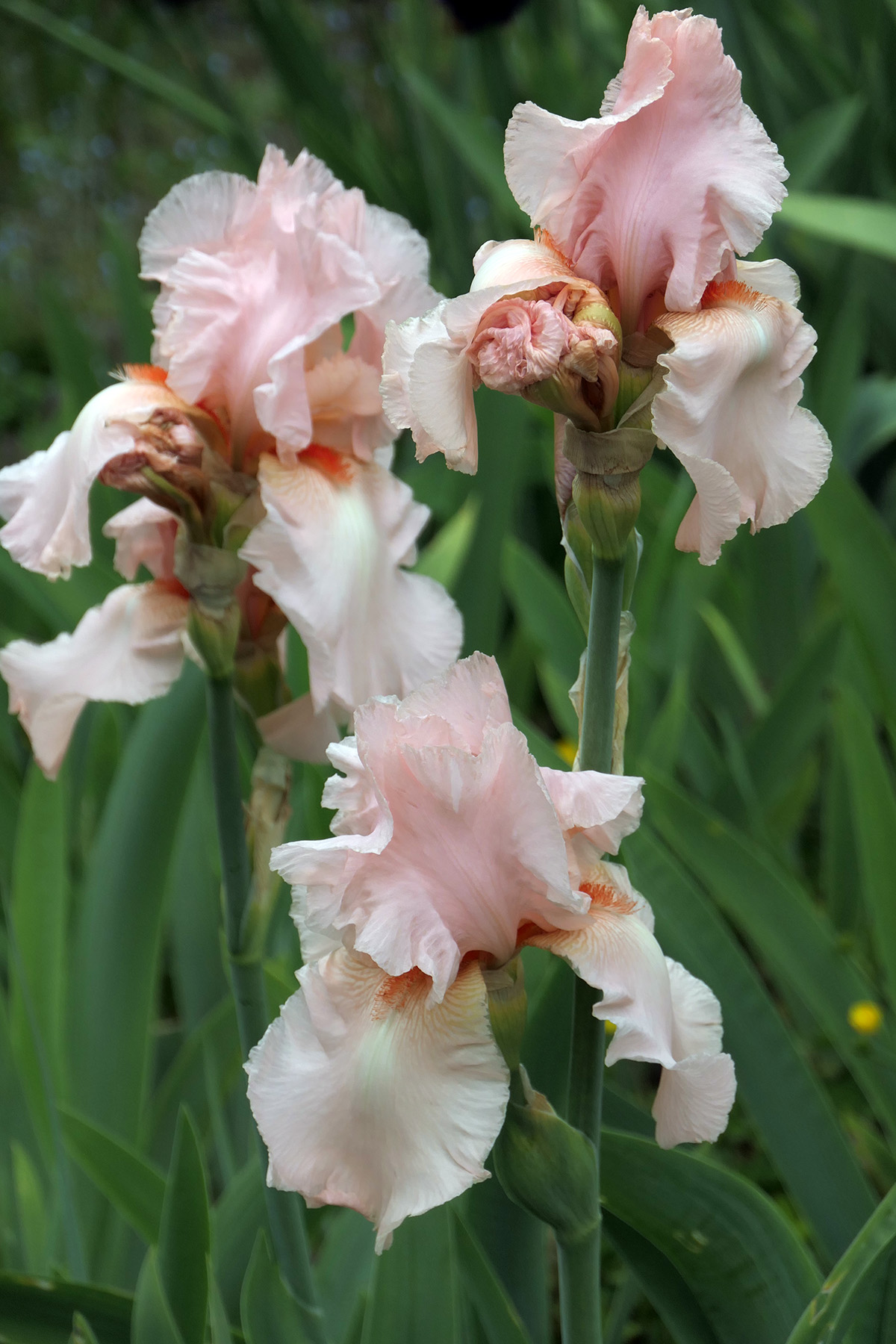When you catch me reading Popular Mechanics you know something is off. Well, you should know if you are a regular reader. In fact, all of today’s musings came about because something was off: my (insensible) assumption that irises have no smell. From flowers to a popular mechanics article – it’s been an interesting ride. Let me drag you along.

I have been photographing irises in my neighborhood across the last week, thinking I might do a bit on painters who were drawn to these showy plants. Along the way I was wondering why some flowers smell and others don’t, believing that the latter was true for irises. It turns out they do smell, if faintly, as long as you stick your nose into the blossom. It also seems to be the case that the rarest of perfume ingredients is delivered by irises, although by their roots – orris roots. The reason the stuff is so precious has to do with the fact that when you harvest the rhizomes you have to store them (insect- and fungus-proof) for 3 to 4 years in order for them to develop some scent.



My general question about smell vs no smell had a pretty straightforward answer: if plants are pollinated by birds (wildflowers, hibiscus and many other tropical plants, for example) then scent is unnecessary since birds don’t have an olfactory sense. If plants need insect pollinators, then they want to smell good to guide bees or other critters to the blossoms. And here it gets truly interesting: there is an insane calibration going on between what insects are around, when they are around, and how the plants maximize their attractiveness in idiosyncratic ways. (I was told across the dinner table that all that is taught in 5th grade – well, I must have played hooky…)
Let’s start with time: flowers who are pollinated by moths or bats smell the strongest in the evening into the night. Others prefer morning or afternoon, depending on who is most active during those times, bees and butterflies included. The period before blossoms open widely, and when they are almost spent and have been already sufficiently pollinated, matter as well. During these times the plant produces few volatiles (as the scent molecules are called in science speak), sparing their pollinators effort without reward.



Each scent sends specific signals, often across long distances, attracting those who are the best match. Species pollinated by bees and flies have sweet scents, while those pollinated by beetles have strong musty, spicy, or fruity smells. Successful pollination is of course essential to agricultural crops and fruit-bearing trees, so maximizing your chances of getting the right insect to the right plant is what scent is all about.
Next, leave it to us humans to put a wrench in the works. Flowers smell far less intensely these days than they used to. Selective breeding of flowers has focused on many attributes, all of which seem to have had a detrimental effect on the genetic make-up responsible for odors. Breeders in the cut-flower and ornamental plants market have concentrated on aesthetics (color and shape,)improved vase life and shipping characteristics.So long, scents….



Which finally brings me to Popular Mechanics, where I found, while learning about all this genetic engineering, an article that talks about genetic engineering of scents in reverse order. The plants are no longer among us, but scientists are able to recreate their scent with pretty nifty synthetic chemistry. Scientists from a Boston-based synthetic biology company Ginkgo Bioworks, a smell researcher and an artist teamed up to re-create the scents from extinct plants. They got DNA extracted from specimens of three plants stored at Harvard University’s Herbaria, and used synthetic biology to predict and resynthesize gene sequences that might be responsible for the smell. Using Ginkgo’s findings, Sissel Tolaas used her expertise to reconstruct the flowers’ smells in her lab, using identical or comparative smell molecules.
The smells they tried to resurrect were from plants that where killed off by human expansion: Hibiscadelphus wilderianus, a plant from Hawaii last seen in 1912, destroyed by cattle ranching; Orbexilum stipulatum, a scurf pea that was drowned when a dam built in the Ohio River flooded its habitat in 1920; and the Wynberg Conebush, native to South Africa, superseded by vineyards in Cape Town. The collaborative work was eventually made into an interactive art exhibit, Resurrecting the Sublime, which can be visited here, should you want to travel again. The video in this link tells the whole story.


Nature. Science. Art. All you’ve come to expect to read about in this space. Just tell me, how do I fit in the politics?
Music today is from a few centuries apart. Haydn addressing the flower and Ibarrondo perhaps a woman, but we can pretend it’s the flower. Enough flowing ruffles in the composition to match the blossoms….



